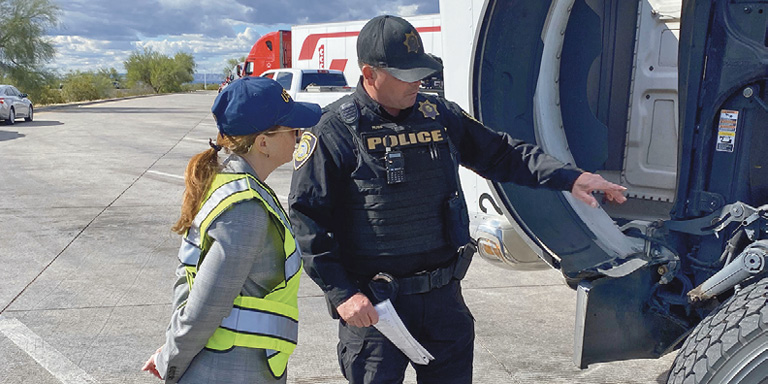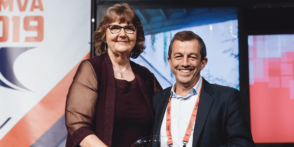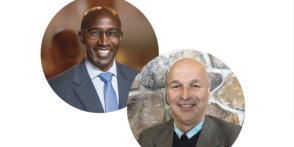Q&A With Robin Hutcheson, Administrator of the Federal Motor Carrier Safety Administration
We caught up with the Administrator to discuss her priorities for the agency and the importance of a “one driver, one history record”

What are some of your priorities for the agency?
I have some priorities that have come together over the last several months by working together with the entire staff of FMCSA and, in particular, leaders in this organization who’ve been here a long time and have been working toward our mission of safety. And there are five areas of focus for our future. We have a focus on prevention and being at the headwaters of safety. That means that we’re bringing focus to drivers. Drivers are at the heart of safety very often, so our work on drivers is to support longevity in the industry. We have data that says that the longer a driver stays in the industry, the safer they become. So our work needs to support the profession of driving.
A second area is technology, which is rapidly changing the industry. There’s tremendous opportunity for safety—and there’s also a little bit of risk. So our focus is to harness technology for safety outcomes. It’s also focusing on the vehicle technology that is more and more prevalent. That’s things like cameras that help drivers see blind spots and, of course, advanced driver assistance and automated driving systems.
The third area is upgrading our registration system. This will help close some of the loopholes that unsafe drivers can get through and be on the road.
The fourth area is we have doubled our grant funding through the bipartisan infrastructure law. That gives us an amazing opportunity to leverage every dollar for safety in support of the national roadway safety strategy. And to leverage every dollar for all of our USDOT goals for organizational excellence, safety, economic strength and global competitiveness, equity, climate and sustainability, and transformation.
And then last, we need to do the job of telling our story, why it’s important that we do this work and how it improves the lives of all Americans. So we’re doing a lot of work around our communications strategy.
How can AAMVA and FMCSA work together toward the ultimate goal of reducing large truck and bus fatalities?
The good news is that I’m not starting something new here. This has been a really good, productive and fruitful relationship for a long time. And we’ve already started this important work together. I want to say how much I appreciate that AAMVA has committed to the National Roadway Safety Strategy call to action. AAMVA’s commitment is to have the states implement the drug and alcohol clearinghouse, too. This is a really important aspect of closing loopholes so that drivers cannot take a bad record from place to place. The second thing is the work on the exclusive electronic exchange, which we think will improve compliance. So that’s just another great area of partnership between AAMVA and FMCSA.
How can AAMVA state driver licensing agencies and FMCSA work together to foster a strong working relationship?
I think we have some successes to use as a guide map for our future collaboration and communication. When we rolled out ELDs, we really relied on AAMVA to help us with communication to states. We heard from AAMVA regarding issues with states early. And we were able to offer specific help to those states. And that’s just a good example of how we can continue to show up together on hard problems and on big opportunities. As of late, I think we’ve been in very close communication with AAMVA, and as long as I’m in leadership and sitting in this seat, I intend to have a very close working relationship with the board and the leadership of AAMVA, as well as the opportunity to visit with state driver’s license agencies. I did this in Wisconsin—I was visiting our division offices and I took an opportunity to meet with Kristina Boardman to have an open conversation about challenges there and ways FMCSA could be helpful. So in addition to working with the more formal structure of AAMVA, I really enjoy the opportunity to meet with leaders across the country—state by state—as I’m traveling and doing the work of FMCSA.
How important is the concept of “one driver, one history record” to the goal of highway safety?
I spent my first year at the USDOT in the Biden administration, as the deputy assistant secretary for safety policy in Secretary Pete Buttigieg’s office—roadway safety is a priority for Secretary Buttigieg. I had this opportunity to bring the department together for a national roadway safety strategy. There were so many people who have been here for a long time, who worked very hard on this. And while I was very dedicated to it, and in that leadership role, a lot of credit goes to the people of USDOT, who have been wanting to do this kind of work and have seen in Secretary Buttigieg an opportunity to pull together a national strategy. What this national strategy does is four things. One, it says that zero is the right number of deaths on our nation’s roadways. Two, it adopts the “safe system” approach, which says that we need safer people, safer vehicles, safer speeds, safer roads and better post-crash care. The third thing that it does is it lists a set of actions that we commit to as USDOT. And then the fourth thing it says is that we can’t do it alone. Everybody has to pull for this, so here’s a call to action and we hope you will join us.
So that’s the structure of the National Roadway Safety Strategy. We have a role in just about all of those, but this “safer people” is where we are bringing focus and where we think that this “one driver, one history record” is very important, and very important that we do this work together. It’s so important because it closes one of the loopholes that we don’t want to have out there today. So that one driving history attached to a driver ensures that faulty records in one state can’t follow that person to another state. This is why it is articulated in the National Roadway Safety Strategy and will lead to safer people.




